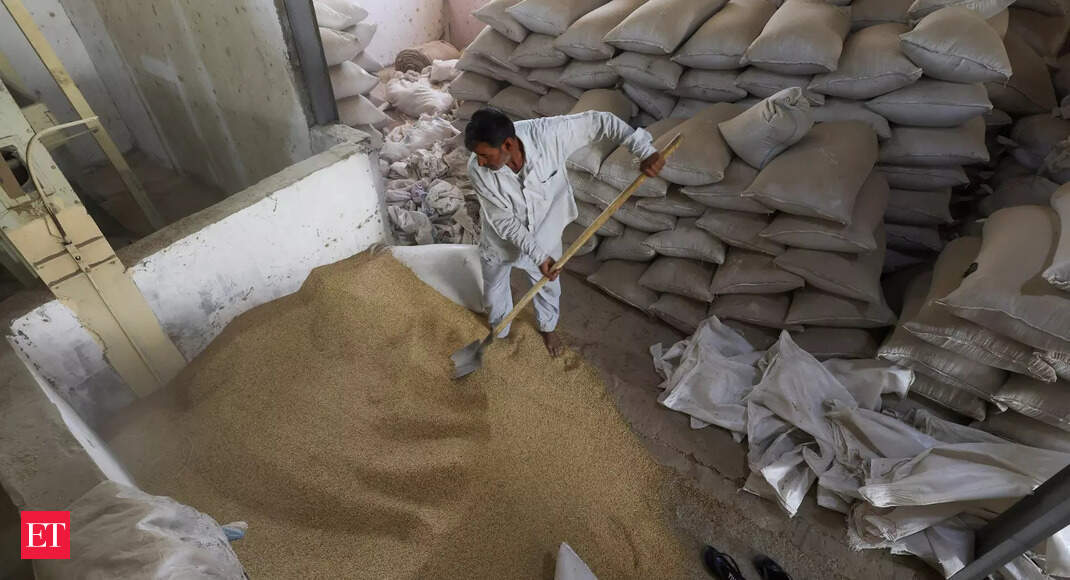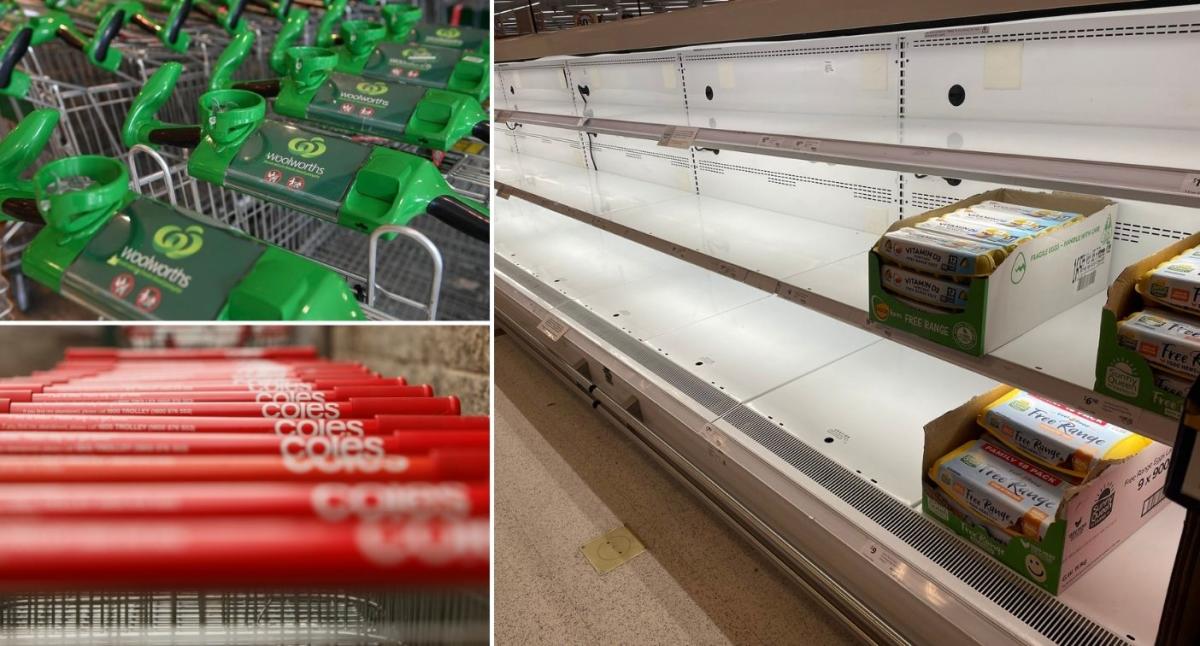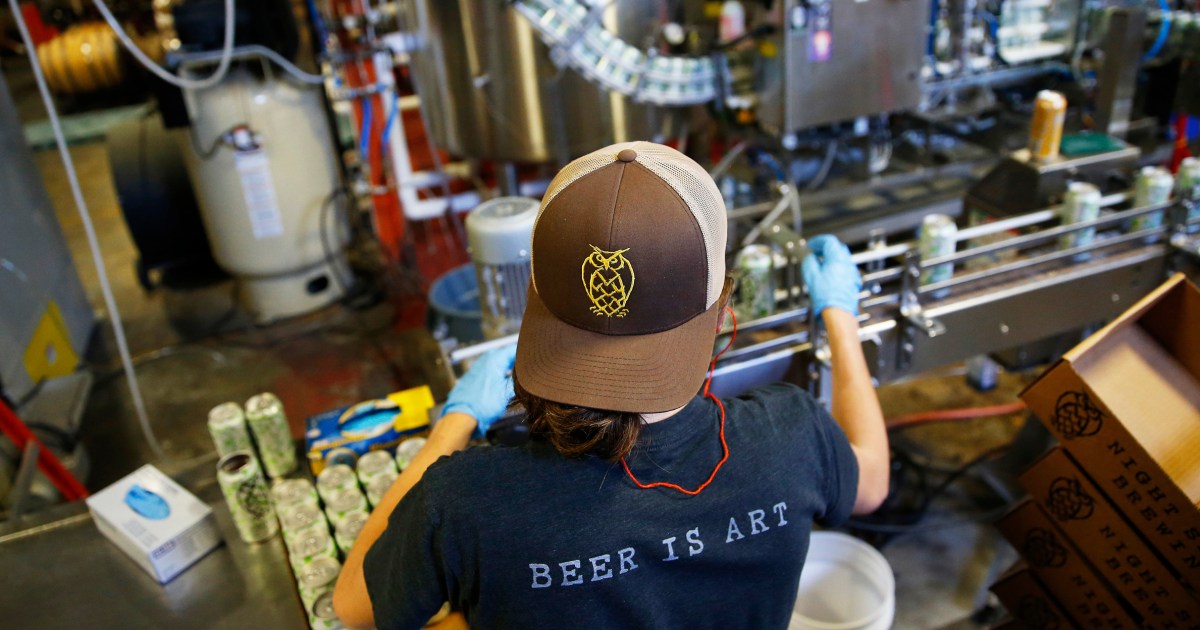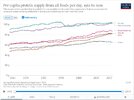There is plenty of food.
You are using an out of date browser. It may not display this or other websites correctly.
You should upgrade or use an alternative browser.
You should upgrade or use an alternative browser.
Potential Food and Energy Shortage Across the World
- Thread starter PabloAngello
- Start date
Pat
Jedi Master
Very instructive research. Thank youFor those in the position to grow their own, urine is a good substitute. In fact I wonder how shortage of nitrogen fertilisers can be claimed since I doubt there's a shortage of urine in the world!
For protection against harmful pathogens it is suggested that using urine from those who are ill, have urinary tract infections or who are on medication be avoided. Otherwise storing urine in a sealed container for two weeks before use allows ammonia in the sample to kill other harmful pathogens that might be present.
Here's another study conducted in Uganda.

Spain heatwave: PM tells workers to stop wearing ties to save energy
Pedro Sanchez says it will reduce air conditioner use and save energy as Spain endures a heatwave.
Pedro Sanchez has come up with a genius plan - just stop wearing a tie so you can use less air conditioning and reduce dependency on Russian energy.
Actually, clown costumes don't come with ties. I have an idea...
There is urine in the world that could be used better. And the case with Uganda, is one example. The above paper mentions:For those in the position to grow their own, urine is a good substitute. In fact I wonder how shortage of nitrogen fertilisers can be claimed since I doubt there's a shortage of urine in the world!
For protection against harmful pathogens it is suggested that using urine from those who are ill, have urinary tract infections or who are on medication be avoided. Otherwise storing urine in a sealed container for two weeks before use allows ammonia in the sample to kill other harmful pathogens that might be present.
Here's another study conducted in Uganda.
If one looks at the statistics from the World Bank, then more than half the world population live in urban areas, but urban areas are not where the fertilizing value from human waste is most needed. Just like food is transported around the world, and from rural areas to urban areas, so the collected waste would have to be returned to the farms outside the town, and this would cost energy.The promotion of inorganic fertilizer is a dominant strategy among governments and international development organizations to tackle low soil fertility. However, for the large majority of farmers in sub-Saharan Africa such initiatives have had limited effects due to high costs and limited access. At roughly 2 kg per hectare of farmland, the average fertilizer consumption1 in Uganda is among the lowest in the world (World Bank, 2013). Among women, who are likely to be more asset-poor and subsistence oriented compared to men, fertilizer use is even lower (Peterman et al., 2010). Soil fertility practices benefitting those who need it most are therefore called for.
Assuming we do spend the energy to transport the urine back, once being sprayed on the fields, it would smell. That problem can be tolerated, since it disappears after a few hours, or it can be minimized by being injected into the soil using heavy machines, which of course also require energy, not only for their work, but also for their very production at a factory. That the urine would smell is in itself, only one problem, The reason it smells, especially if not injected is because, the ammonia dissolved in the urine evaporates to the air. What goes to the air, does not benefit the fields as intended. In Exploring the Potential for Concentration of Nutrients from Urine Using Solar Evaporation and Carbon Dioxide Trapping of Ammonia, they discuss how to maximize the use of the fertilizer value of urine.
The idea is realizable if you have energy, and they suggest solar power, which is great if the Sun shines.Abstract: Nutrients derived from urine such as nitrogen, phosphorous and potassium constitute valuable sources of fertilizers needed for growing plants and as alternatives to commercial fertilizers. Concentration of nutrients available from urine provides advantages of reducing the volume of transportation, the health risk and making nutrient application to soil stable and suitable. An exploratory review of a possible technology for concentration of nutrients from urine using solar power assisted evaporation and carbon dioxide trapping of evaporated ammonia is discussed in this paper as a potentially viable technology for concentrating nutrients from urine as well as another sequestration option to reduce carbon foot print in the environment.
Another difficulty for using all the nitrogen in the urine, is that it takes a little time for the nutrients to be absorbed. The above paper put it this way:
If it rains close to the time of spraying the stored urine, the water carries a part into the waterways. In some areas of Europe, it was a tradition to spray the fertilizer after the Autumn harvest. Perhaps it was because this time was less busy. However, the fields would be bare until Spring. Between Autumn and Spring, parts of the fertilizing value of the urine and the manure would be leached into the waterways. Of course, one can try to adjust the time of application, but often there will be a loss, which is not always predictable, since the intensity, and amount of precipitation varies.Nutrients available from urine are easily absorbed although they can also be easily leached away from the soil (except crystal forms such as Struvite) by water compared to organic compost (Keshay and Chen, 2011).
By now we have argued that there will be loss of nitrogen to the air and to the water, but that is not all. When the nitrogen in the urine enters the Earth, bacteria convert the ammonia to nitrates, which is the form that can be absorbed by plants. However, nitrates are also used by some other microorganisms that convert the nitrate back to pure nitrogen. The part that goes into the air is not utilized by the plants. In biologynotes, they have the following image that summarizes the process. Top left is the nitrification process, bottom left is the denitrification process.
The above image to the right is from the Wiki on the nitrogen cycle. That Wiki has another image, which more clearly illustrates how nitrogen bound in different chemical compounds is used and transformed in the soil:
The difficulties of not being able to return all the nitrogen in human waste to the soil that produces the food they eat, indicates that sustainability is not always straightforward. Fortunately, there are people who have thought deeply about how to achieve a situation where humans could live sustainably on Earth. Different methods and assumptions are at the basis of calculations that lead to rough estimates of the total carrying capacity for the Earth. Recently, while doing a post in Session 30 October 2021, I was surprised to learn how much the numbers for the carrying capacity vary. The highest was one trillion, the lowest only seven million, with many calculations from within the last 30 years giving numbers substantially lower than the current size of the world population.
syldan
Dagobah Resident
Time is for solutions in Québec. We had a greenhouse this spring until a Tornado (if that is even imaginable) destroyed everything we worked on, ripped out more than 40 trees on the property, fortunately nobody in our area was hurt. There were warnings on cell phones, TV, but we use neither soooo! 2 months later we are still cutting trees chainsawing away, to make firewood, that is the upside. We now have wood for several winters, it just needs some tender care. Having through this traumatic experience connected with neighbours, we have been shown how things were done in the old days. Simple, nearly costless and efficient. Always having had gardens in my life, I chose to use some of the insurance money to upgrade EVERYTHING. We reinvested in TOOLS, the above greenhouse, generators, etc. And we are taking the current situation seriously moving forward to brace ourselves for the coming winters and whatever may befall upon us.
I must say that when the time comes, it is very important to rise up to the occasion, and develop ideas, skills, to teach others, share, network and get on it. Nothing happens in vain, if we are experiencing this NOW, to me at least, it means that we need this skill set. We are only allowed 3 chickens per household in this area (can you believe it?), so we ordered them. I believe that nature will make us adapt, and re-adapt but that we should invest ourselves fully if we are to survive the upheaval that is being formented.
We are also using urine mixed with wood ash as a source of nitrogen, and yes it seems to work well. The cost of wood, fertilizers, tools, everything has gone up radically, so we are now finding new ways to use whatever materials we have and gather to further our endeavours. To us, that is a wonderful thing! As a side note, I began attending our local church to bring helping hands, and in return we are meeting the most wonderful human-humans. From necessity comes invention. But INTENTION is a must! Maybe we could create a SOLUTIONS thread? From the experiences of forum members in different parts of the world, I believe we can help each other find ways to circumvent what seems like doom and gloom. It is together that we can do this!

World's food supply faces new threat from lack of rain in India
The threat to Indias rice production comes at a time when countries are grappling with soaring food costs and rampant inflation. Total rice planted area has declined 13% so far this season due to a lack of rainfall in some areas, including West Bengal and Uttar Pradesh, which account for a...
Along with some fresh produce (lettuce, spinach, tomatoes, berries), there is now a nationwide shortage of eggs in Australia.

 au.news.yahoo.com
au.news.yahoo.com
Eggs disappear from Coles, Woolworths as national shortage continues
Shopping limits will continue at Coles amid egg shortages. Find out when supplies will return to normal.
My mother lives in the north of Mexico, in Monterrey, the second most populated city in the country and the drought has hit hard, the government has started to ration water, and they can only have water flowing in the house for a few hours a day.
The city has large beer and soft drink companies and the water cutbacks have not yet affected them much, the government's water cutback measures are for the 5.3 million people who live there, as is to be expected.
Just as the governor takes the opportunity to comment that the problem of water shortage or drought is due to "Climate Change", as is to be expected too.
The complete article is here in Spanish
"Monterrey has reached day zero": the serious water shortage crisis in Mexico's second most populated city
And these other interesting articles about other cities
Spam locked up in some New York stores amid soaring thefts

I find this photo quite funny, although the problem is quite serious, it seems that the "hunger games" are already looming in the big cities.
German cities start to turn off public hot water, lights, fountains, and may cancel beer too
The city has large beer and soft drink companies and the water cutbacks have not yet affected them much, the government's water cutback measures are for the 5.3 million people who live there, as is to be expected.
Just as the governor takes the opportunity to comment that the problem of water shortage or drought is due to "Climate Change", as is to be expected too.
The complete article is here in Spanish
"Monterrey has reached day zero": the serious water shortage crisis in Mexico's second most populated city
And these other interesting articles about other cities
Spam locked up in some New York stores amid soaring thefts
I find this photo quite funny, although the problem is quite serious, it seems that the "hunger games" are already looming in the big cities.
German cities start to turn off public hot water, lights, fountains, and may cancel beer too
syldan
Dagobah Resident
To me, the most scary part is what kind of people eat those things??? If they are prepared to steal something so horrible, what else are they up to? (Rethorical question of course...)My mother lives in the north of Mexico, in Monterrey, the second most populated city in the country and the drought has hit hard, the government has started to ration water, and they can only have water flowing in the house for a few hours a day.
The city has large beer and soft drink companies and the water cutbacks have not yet affected them much, the government's water cutback measures are for the 5.3 million people who live there, as is to be expected.
Just as the governor takes the opportunity to comment that the problem of water shortage or drought is due to "Climate Change", as is to be expected too.
The complete article is here in Spanish
"Monterrey has reached day zero": the serious water shortage crisis in Mexico's second most populated city
And these other interesting articles about other cities
Spam locked up in some New York stores amid soaring thefts
View attachment 61990
I find this photo quite funny, although the problem is quite serious, it seems that the "hunger games" are already looming in the big cities.
German cities start to turn off public hot water, lights, fountains, and may cancel beer too
To those willing to give urine a try as a fertilizer.
Dilute urine with water in 1:10 ratio. 1 part of urine to 10 parts of water.
It takes the smell away and also can be used straight away on plants. Undiluted urine is way too strong and would kill your plants. Guess how I know.
Dilute urine with water in 1:10 ratio. 1 part of urine to 10 parts of water.
It takes the smell away and also can be used straight away on plants. Undiluted urine is way too strong and would kill your plants. Guess how I know.
Data about macro and micro nutrients in the food people eat in different countries might give an impression of what a lack of food would mean.
If we can't buy a particular brand in an otherwise plentiful market, there is a shortage of the that brand, but not of food in general. Real food shortage is a more serious condition, as it can lead to malnutrition caused by too little food.

Notice above that China only notes about 10 % while India lists close to 50 % as suffering symptoms of hidden hunger. Perhaps that is due to some people having too little food. At least the food equality is rated higher in China.

And generally China has a richer diet, with more protein and more meat:

The above protein consumption per country does not consider that not all protein sources are equally bioavailable, see for instance this document Dietary protein quality evaluation in human nutrition Report of an FAO Expert Consultation. In addition, there are differences from person to person in terms of how well their gut microbiome processes the protein that is available. We would expect the gut microbiome of an average person in Nigeria to make comparatively better use of the protein in the food available than someone brought up on a much richer diet, where there is protein in abundance.
The next diagram shows large variations in the fat supply per day per person among different countries. Asia, which had a consumption around 25 grams in 1961, now consumes about 80 grams. Africa is the continent that has changed average consumption the least.

Irrespective of the general rise in the use of fat and protein, one can not compare regions completely, as the average person in different countries have different requirements. At least that is what they claim. Lowest is about 1600 calories, highest is around 2100 calories. That is a change of about 25 % from the lowest to the highest.

There has been a tendency toward a gradual increase in the energy content of the food we eat:

The amount of energy supplied by the diet has had its ups and downs in history

The above cases of low energy supply in the UK during the medieval ages, in France during the eighteenth century and in China during the middle of the twentieth century, has probably been experienced by many citizens of the time as food shortage. Perhaps the height and weight of the people were less, but they had to work hard, women were pregnant more often, and there was much less heating of their places of dwelling. If a food shortage come to countries, where there used to be abundance, how will they experience it?
There are different ways to look at food shortagesThe UN has a hunger map with a few more data, like the all important Covid.
View attachment 60912
I do not know if this map is true, but we can see how the map will develop in the coming months.
If we can't buy a particular brand in an otherwise plentiful market, there is a shortage of the that brand, but not of food in general. Real food shortage is a more serious condition, as it can lead to malnutrition caused by too little food.
In some countries they say there is a hidden hunger, because a certain percentage of the children show signs of micronutrient deficiency.Micronutrient Deficiency
Malnutrition can arise in three forms:
This data entry focuses on micronutrient deficiencies; our entries on undernourishment and obesity can be found at the links above.
- hunger and undernourishment, which is defined as dietary energy intakes below the minimum levels necessary to achieve and maintain a healthy weight;
- obesity or overnourishment, which is defined as dietary energy intake which exceeds requirements for maintenance of a healthy bodyweight;
- micronutrient deficiencies, which is defined as a lack of essential vitamins and minerals required in small amounts by the body for proper growth and development.
In contrast to macronutrients (energy, protein and fat), micronutrients are vitamins and minerals which are consumed in small quantities, but are nonetheless essential for physical and mental development. Essential micronutrients include (but are not limited to): iron, zinc, calcium, iodine, vitamin A, B-vitamins, and vitamin C.
Micronutrient deficiencies form an important global health issue, with malnutrition affecting key development outcomes including poor physical and mental development in children, vulnerability or exacerbation of disease, mental retardation, blindness and general losses in productivity and potential. Unlike energy-protein undernourishment, the health impacts of micronutrient deficiency are not always acutely visible; it is therefore sometimes termed ‘hidden hunger’ (the two terms can be used interchangeably). The World Health Organization (WHO) estimate that more than two billion people suffer from micronutrient deficiency globally.
This entry explores global trends in key micronutrient deficiencies, potential health and development impacts, and progress in interventions to address vitamin and mineral deficiencies.
Notice above that China only notes about 10 % while India lists close to 50 % as suffering symptoms of hidden hunger. Perhaps that is due to some people having too little food. At least the food equality is rated higher in China.
And generally China has a richer diet, with more protein and more meat:
The above protein consumption per country does not consider that not all protein sources are equally bioavailable, see for instance this document Dietary protein quality evaluation in human nutrition Report of an FAO Expert Consultation. In addition, there are differences from person to person in terms of how well their gut microbiome processes the protein that is available. We would expect the gut microbiome of an average person in Nigeria to make comparatively better use of the protein in the food available than someone brought up on a much richer diet, where there is protein in abundance.
The next diagram shows large variations in the fat supply per day per person among different countries. Asia, which had a consumption around 25 grams in 1961, now consumes about 80 grams. Africa is the continent that has changed average consumption the least.
Irrespective of the general rise in the use of fat and protein, one can not compare regions completely, as the average person in different countries have different requirements. At least that is what they claim. Lowest is about 1600 calories, highest is around 2100 calories. That is a change of about 25 % from the lowest to the highest.
There has been a tendency toward a gradual increase in the energy content of the food we eat:
The amount of energy supplied by the diet has had its ups and downs in history
The above cases of low energy supply in the UK during the medieval ages, in France during the eighteenth century and in China during the middle of the twentieth century, has probably been experienced by many citizens of the time as food shortage. Perhaps the height and weight of the people were less, but they had to work hard, women were pregnant more often, and there was much less heating of their places of dwelling. If a food shortage come to countries, where there used to be abundance, how will they experience it?
Attachments

Craft breweries shutting down due to national carbon dioxide shortage
Breweries have already been facing higher costs for raw materials like aluminum and barley as a result of inflation.
Let's not go there...........Guess how I know.

